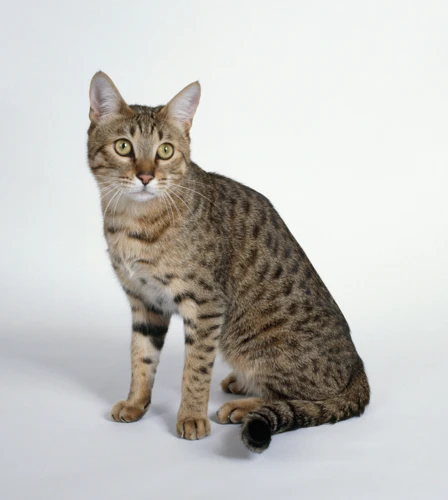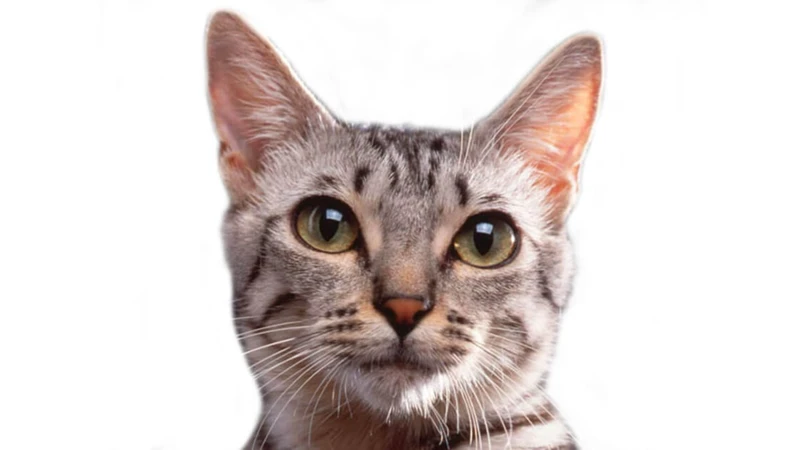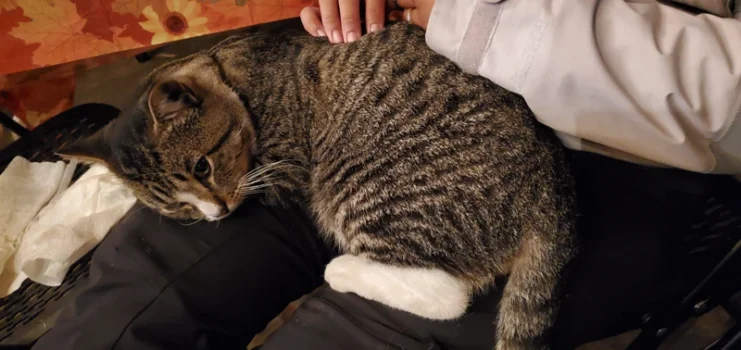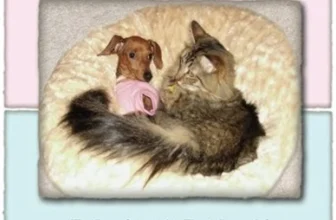As cat lovers, we are always curious to learn more about our feline friends and how to take better care of them. One beautiful breed that has captured the hearts of many pet parents is the California Spangled Cat. But like any other cat, they have unique needs when it comes to fostering and maintaining their health and happiness. And who better to guide us on this journey than Dharma’s Vet – an experienced professional who has seen it all? In this article, we will delve into the practical tips shared by Dharma’s Vet on fostering a California Spangled Cat, from basic care to teaching good behavior. So sit back, relax, and discover how you can be the best cat parent to your California Spangled Cat.
Basic Care

Taking care of a California Spangled cat is a rewarding experience. These unique and beautiful cats have a reputation for being playful, intelligent, and affectionate. To ensure the health and happiness of your furry friend, it’s important to provide them with proper care. In this section, we will explore the basic care that every California Spangled cat needs, from creating a safe environment to regular veterinary check-ups. By following these tips, you can create a comfortable and loving home for your cat.
1. Creating a safe environment
Creating a safe environment
When fostering a California Spangled cat, safety should be the top priority. Here are some tips on creating a safe environment for your new feline friend:
- Secure windows and balconies to prevent your cat from escaping or falling. You can use screens or install window stoppers to ensure their safety.
- Keep harmful plants and chemicals out of reach. For example, lilies and chocolate can be toxic to cats. Store cleaning supplies, medications, and other harmful substances in cabinets that your cat can’t access.
- Make sure electrical cords are not exposed and are tucked away. Cats are curious and may try to chew on electrical cords, which can lead to injury or even electrocution.
- Provide hiding places and elevated spaces to give your cat a sense of security. Cat trees, shelves, and cozy beds are great for this purpose.
- Install a microchip or ID tag on your cat. Accidents can happen, and your cat may wander off or get lost. This will increase the chances of finding your cat if it ever goes missing.
By creating a safe environment for your California Spangled cat, you will help them feel comfortable and relaxed in their new home. For more information on the California Spangled cat, check out the breed’s history or learn about Dharma, a California Spangled cat at the National Zoo. Also, consider how the California Spangled cat and its conservation efforts contributes to the future of animals at the zoo at Cal Cat Conservation Future.
2. Feeding your California Spangled cat
Feeding your California Spangled cat is one of the most important parts of caring for your feline friend. The right diet can ensure that your cat has all the nutrients they need for a long and healthy life. Here are some tips to keep in mind when feeding your California Spangled cat.
| What to feed your California Spangled cat | How much to feed your California Spangled cat | When to feed your California Spangled cat |
|---|---|---|
| High-quality dry or wet food: Your California Spangled cat needs protein, fat, and carbohydrates in their diet. Look for food with meat as the first ingredient. Avoid food with fillers, like corn and soy, which don’t provide your cat with the nutrients they need. | Follow the feeding instructions: The amount you should feed your California Spangled cat will depend on their weight, age, and activity level. Follow the feeding instructions on the cat food packaging. You can also talk to your vet for specific recommendations. | Feed your cat on a schedule: Cats do best when they have a routine. Try to feed your California Spangled cat at the same time each day. Make sure they have access to fresh water at all times. |
| Special diets: If your California Spangled cat has a health condition, they may require a special diet. Your vet can help you choose the right food for your cat. | Avoid overfeeding: Obesity is a common problem in cats. It can lead to health issues like diabetes, arthritis, and heart disease. Make sure you’re not overfeeding your California Spangled cat. | Treats: Treats should make up no more than 10% of your California Spangled cat’s diet. Make sure any treats you give them are healthy and don’t contain too much fat or sugar. |
Remember that feeding your California Spangled cat a balanced diet is crucial for their health. You should also avoid giving your cat table scraps or human food. These can upset their stomach and lead to obesity and other health problems. Stick to cat food made specifically for felines. If you’re unsure about what to feed your cat, talk to your vet. They can provide guidance on the best diet for your California Spangled cat.
3. Litter box etiquette
One of the most important aspects of owning a California Spangled Cat is ensuring that you have proper litter box etiquette. Cats are clean animals and they prefer their surroundings to be clean as well. To make sure that your cat doesn’t avoid their litter box, follow these guidelines:
| Do’s | Don’ts |
|---|---|
|
|
By following these litter box do’s and don’ts, you will ensure that your California Spangled Cat has a comfortable and clean space to do their business. Remember, cats prefer a clean and odor-free litter box, so clean it daily and provide plenty of options for your feline friend.
4. Grooming routines
Regular grooming is an essential part of keeping your California Spangled cat healthy and happy. Here are some grooming routines that you should follow:
- Brushing: Brush your cat’s coat every day to remove dead hair, dirt and debris that can cause matting and skin irritation. Use a soft-bristled brush or a comb to avoid hurting your cat’s skin. California Spangled cats have a short and sleek coat that doesn’t require much brushing, but it’s still important to groom them regularly.
- Bathing: You don’t need to give your California Spangled cat a bath frequently, but you should bathe them occasionally to keep their coat shiny and clean. Use a mild cat shampoo and lukewarm water. Make sure to rinse all the soap out of their coat to avoid skin irritation. Dry your cat with a towel or a hairdryer set on low heat.
- Nail trimming: Trim your cat’s nails every two to three weeks to avoid overgrowth and to prevent them from scratching furniture or people. Use nail clippers specifically designed for cats and avoid cutting the quick, which is the blood vessel in the nail. If you’re not comfortable trimming your cat’s nails, ask your vet to do it.
- Ears and eyes: Check your cat’s ears and eyes regularly to ensure that they’re clean and healthy. Use a cotton ball or a soft cloth to clean the outer part of their ears. Don’t use Q-tips as they can cause damage to the ear canal. If you notice any discharge or redness, contact your vet. Wipe your cat’s eyes gently with a damp cloth to remove any crust around the eyes.
- Dental care: Brush your cat’s teeth daily to prevent dental problems such as gum disease or tooth loss. Use a soft-bristled toothbrush and cat-specific toothpaste, as human toothpaste can be toxic to cats. If your cat doesn’t tolerate brushing, ask your vet for alternative ways to keep their teeth clean.
By following these grooming routines, you’ll keep your California Spangled cat looking and feeling their best. Remember, grooming sessions also provide an opportunity to bond with your cat and to spot any health issues before they become serious.
5. Regular veterinary check-ups
It’s important to ensure your California Spangled Cat stays healthy and happy by visiting the veterinarian regularly. Even if your cat appears to be in good health, regular check-ups can help prevent potential health issues and catch any problems early on. Here are some things to keep in mind when it comes to regular veterinary check-ups:
- Scheduling regular appointments: Make sure to schedule regular appointments with your cat’s veterinarian. This will help you keep track of any necessary vaccinations and allow the vet to monitor your cat’s health over time.
- Monitoring eating and drinking habits: If you notice any sudden changes in your cat’s eating or drinking habits, it’s important to bring them to the attention of your vet. This can be a sign of an underlying health issue.
- Checking for parasites: Parasites like ticks and fleas can be harmful to your cat’s health. Your vet can recommend appropriate preventative measures and check for any signs of parasites during regular check-ups.
- Performing routine blood work: Routine blood work can provide important information about your cat’s overall health and detect any potential health issues early on. Your vet may also recommend urine or fecal tests.
- Addressing any concerns: If you have any concerns about your cat’s health or behavior, don’t hesitate to bring them up with your vet during the check-up. Catching and addressing any issues early on can prevent more serious problems down the line.
By taking your California Spangled Cat to the veterinarian regularly, you can help ensure they stay healthy and happy for years to come. Remember to schedule regular check-ups, monitor your cat’s eating and drinking habits, check for parasites, perform routine blood work, and address any concerns with your vet.
The Importance of Playtime

As much as we like to believe that our California Spangled cats mainly spend their days sleeping and lounging around, they actually require mental and physical stimulation to live healthy and happy lives. That’s why playtime is such an important aspect of cat care. Not only does playtime provide your feline friend with exercise, but it also helps sharpen their natural hunting instincts. In this section, we’ll delve into the various ways you can keep your cat entertained and active.
1. Entertaining your California Spangled cat
Whether you have just adopted a California Spangled Cat or have had one for years, it’s important to keep them entertained and mentally stimulated to prevent boredom and potential behavior issues. Here are some ways to keep your cat entertained:
- Interactive toys: Provide your cat with toys that they can interact with, such as puzzle feeders or toys that dispense treats. This will help keep their mind engaged and provide a fun challenge.
- Window perches: Cats love to watch the world outside, so providing a comfortable perch near a window can provide hours of entertainment. Make sure the perch is stable and secure, and consider adding a bird feeder or bird bath outside for added stimulation.
- Scratching posts: Scratching is a natural behavior for cats, and providing them with appropriate surfaces to scratch on will not only keep them entertained, but also save your furniture. Offer a variety of textures and heights to find what your cat enjoys most.
- Hide-and-Seek games: Cats love to play hide-and-seek, so use toys or treats to hide around the house for your cat to find. This can also help build their hunting instincts.
- Playtime with a laser pointer: Many cats love chasing the red laser dot of a laser pointer. Just be sure to avoid shining the laser in your cat’s eyes or allowing them to become fixated on the dot for too long.
- Catnip: Not all cats react to catnip, but for those that do, it can be a great way to provide some extra entertainment. Offer catnip toys or sprinkle some on a scratching post or toy for added enjoyment.
Remember to always supervise your cat during playtime and offer a variety of toys and activities to keep them mentally stimulated and entertained.
2. Tips for playing with your cat
Playing with your California Spangled cat is essential for keeping them healthy both physically and mentally. Here are some tips for making the most out of playtime with your furry friend:
| Tip | Description |
|---|---|
| 1. Variety is key | Try out different types of toys and games to keep your cat interested and engaged. Some cats prefer chasing toys, while others may prefer batting at toys that are stationary. |
| 2. Follow your cat’s lead | Pay attention to your cat’s body language and adjust the game as needed. If your cat starts to lose interest, it may be time to switch to a different toy or take a break. |
| 3. Keep it safe | Avoid using toys with small parts that could be easily swallowed, and make sure your cat cannot become entangled in any strings or cords from the toys. |
| 4. Use interactive toys | Interactive toys such as laser pointers and feather wands can provide mental stimulation for your cat and encourage them to stay active and engaged. |
| 5. Schedule playtime | Set aside time each day specifically for playtime with your cat to ensure they are getting enough exercise and stimulation. |
By following these tips, you can help ensure that your California Spangled cat enjoys playtime and stays happy and healthy. Remember, playing with your cat isn’t just about providing entertainment – it’s an important part of maintaining their overall wellbeing.
3. Best toys for your cat
When choosing toys for your California Spangled cat, it is important to choose items that offer variety, stimulation, and safety. Here are some of the best toy options for your feline friend:
| Toy Type | Description |
|---|---|
| Interactive Toys | Toys that require your cat’s participation, such as wand toys or puzzle feeders, can provide mental and physical stimulation. |
| Feather Toys | Cats love to chase and hunt birds, and feather toys can provide an outlet for that natural instinct. |
| Balls | Lightweight balls that rattle or roll can be great for playing fetch or satisfying your cat’s urge to chase and pounce. |
| Catnip Toys | Catnip can be a great way to stimulate your cat’s senses and provide entertainment. Look for toys that are filled with catnip or can be stuffed with fresh catnip. |
| Scratching Posts | Scratching is a natural behavior for cats and providing a designated scratching post can save your furniture. Look for sturdy, tall posts covered with sisal rope or cardboard. |
| Laser Pointers | While laser pointers should never be directed at your cat’s eyes, they can be a fun way to encourage your cat to run and jump. |
It is important to supervise your cat while they play to ensure their safety. Avoid toys with small parts that can be easily swallowed or cause choking. Try rotating toys to keep your cat engaged and prevent boredom. Remember to always have fun and enjoy playtime with your beloved California Spangled cat!
4. How to keep your cat active indoors
Keeping your California Spangled cat active is crucial to their overall health and well-being, especially if they spend most of their time indoors. Here are some tips for engaging your cat in physical activity at home:
| Activity | Description |
|---|---|
| Interactive Toys | Interactive toys, such as puzzle feeders and wand toys, can provide mental and physical stimulation for your cat. Puzzle feeders require your cat to solve a small problem, such as removing treats from a hidden compartment, while wand toys require your cat to jump and chase a moving object. |
| Scratching Posts | Scratching posts not only satisfy your cat’s natural urge to scratch, but can also provide a good source of exercise. Encourage your cat to use the scratching post by placing it in a central location, and spraying it with catnip spray to make it more enticing. |
| Climbing Structures | Cats are natural climbers and enjoy being up high. Consider investing in a cat tree or building a custom climbing structure for your cat. This will not only provide exercise, but also a comfortable place for your cat to perch and observe their surroundings. |
| Window Perches | Window perches offer a great vantage point for your cat to watch birds and other outdoor activity. Purchase a pre-made window perch or create your own using a sturdy shelf and brackets. Make sure it is secure and stable before allowing your cat to use it. |
Incorporating some of these activities into your cat’s daily routine can lead to a happier, healthier California Spangled cat. Remember to always monitor your cat during playtime and provide plenty of fresh water and rest breaks to prevent overexertion.
Teaching Your California Spangled Cat Good Behavior
As much as we love our California Spangled cats, we understand that they have their own unique personalities which may sometimes lead to unwanted behaviors. However, teaching your cat good behavior is possible with the right approach. Through positive reinforcement training and patience, you can correct unwanted behaviors in your cat and create a happier, healthier relationship. Let’s dive into some tips and tricks for shaping your California Spangled cat’s behavior.
1. Benefits of positive reinforcement training
Positive reinforcement training is an effective and humane way to teach your California Spangled cat good behavior. This method involves rewarding your cat for exhibiting desired behaviors, rather than punishing them for bad behavior. The benefits of positive reinforcement training are numerous, and it can have a positive impact on your cat’s behavior and overall well-being.
| Benefits of Positive Reinforcement Training |
|---|
| Creates a Stronger Bond |
| When you use positive reinforcement training with your California Spangled cat, you are building a stronger bond between you and your pet. By rewarding good behavior, you are showing your cat that you are pleased with their actions, which strengthens the trust and connection between you. This can also lead to a more obedient and happy cat. |
| Improves Your Cat’s Behavior |
| Positive reinforcement training can be a very effective way to improve your cat’s behavior. By rewarding them for desired actions, you are teaching your cat what is expected of them. This can be done with a variety of behaviors, including litter box use, scratching on furniture, and not begging at the table. When your cat knows what is expected of them, they are more likely to exhibit good behavior in the future. |
| Reduces Stress and Anxiety |
| Punishing a cat can lead to feelings of stress and anxiety, which can manifest in a variety of ways. However, positive reinforcement training can help reduce these negative emotions. By focusing on rewarding good behavior, your cat will experience positive emotions and feel more engaged in their environment. This can lead to a happier and healthier cat over time. |
| Makes Training Fun |
| Positive reinforcement training can be a fun way to interact with your California Spangled cat. By offering rewards such as treats or toys, you can make the training process more enjoyable for both you and your cat. This can lead to a more positive experience overall, which can help strengthen your bond with your pet. |
| Encourages Your Cat to Learn |
| Positive reinforcement training can help encourage your cat to learn new things. When you reward good behavior, your cat will learn that certain actions result in a positive outcome. This can lead to your cat trying new things and exploring their environment, which can ultimately lead to a happier and more fulfilled feline companion. |
Positive reinforcement training is a humane and effective way to teach your California Spangled cat good behavior. By rewarding good behavior, you can build a stronger bond with your pet, improve their behavior, reduce stress and anxiety, make training fun, and encourage your cat to learn and explore.
2. Common behavior issues in cats
Feline friends are wonderful companions, but they can have some behavioral issues that can cause stress for both pet and owner. It’s essential to understand common behavior issues in cats to nip them in the bud. Here are some of the most frequent problems observed in California Spangled cats:
| Behavior Issue | Symptoms |
|---|---|
| Aggression | Frequent biting, scratching, and hissing. Tail and ears erect and twitching. |
| Pica | Attempts to eat non-food items like plastic, paper, clothing, or plants. |
| Scratching furniture | Uses claws to scratch furniture, drapes, and other fabric surfaces. |
| Urinating outside the litter box | Urinating outside the litter box on random household objects or surfaces. |
| Excessive meowing | Frequent, loud, or prolonged meowing, often accompanied by restlessness and an inability to sleep. |
These behavioral issues can stem from various factors like environmental changes, stress, fear, or boredom. When dealing with any of these problems, it’s crucial not to yell at, hit, or punish your cat. Instead, try to identify the source of the issue and find a positive reinforcement approach to resolve it. Remember, patience and persistence are the keys to success.
3. Tips for correcting unwanted behaviors
Addressing unwanted behaviors is an essential part of pet ownership. However, it can be complicated, especially when it comes to cats. Here are a few tips for correcting unwanted behaviors.
- Identify the root cause of the behavior: The first step in correcting your California Spangled cat’s unwanted behavior is to understand why your cat is behaving that way. A cat may exhibit unwanted behaviors such as scratching furniture or chewing on plants due to boredom, anxiety, or stress. Once you identify the cause, it becomes easier to correct the behavior.
- Use positive reinforcement: Instead of punishing your cat for unwanted behavior, try positive reinforcement. For example, when you catch your cat scratching on the furniture, redirect their attention to the scratching post and reward them with a tasty treat when they use it.
- Stay consistent: Consistency is essential when correcting unwanted behaviors in your cat. Ensure that all members of your household are following the behavioral modification plan to avoid confusing your cat and undoing any progress.
- Provide alternatives: A cat may exhibit unwanted behavior because they do not have any alternative. Provide alternatives such as cat trees, toys, and scratching posts to redirect your cat’s attention from the unwanted behavior.
- Seek professional help: If your cat exhibits severe unwanted behavior, seeking professional help may be necessary. A professional animal behaviorist can help identify the root cause of the behavior and develop a behavior modification plan that suits you and your cat’s needs.
Addressing unwanted behavior requires patience, understanding, and consistency. By following these tips for correcting unwanted behaviors, you can create a peaceful and happy home for both you and your California Spangled cat.
4. Training your cat to use a scratching post
Scratching is a natural behavior for cats, but it can be quite destructive if not directed appropriately. It is essential to provide your California Spangled cat with a scratching post to satisfy their need to scratch and protect your furniture and carpets. Follow these steps to train your cat to use a scratching post:
- Choose the right scratching post: Cats have individual preferences when it comes to scratching posts. Some prefer vertical posts, while others prefer horizontal ones. The post should also be tall enough to accommodate your cat’s full body stretch. Try different posts to find out what your cat likes best.
- Place the scratching post in a visible location: Put the post in a visible location in your home, preferably near the area where your cat has been scratching. Cats like to scratch in areas where they spend most of their time, so make the post easy to find.
- Introduce your cat to the scratching post: Encourage your cat to approach the post by rubbing catnip or a favorite toy on it. Once your cat approaches the post, give them treats and positive reinforcement for showing interest in it.
- Guide your cat’s paws: Gently guide your cat’s paws towards the post and show them how to scratch it. If your cat does scratch the post, reward them with treats and praise. If your cat scratches elsewhere, redirect them to the post and show them where to scratch.
- Be patient: It may take some time for your cat to get used to the scratching post and to start using it regularly. Be patient and continue to encourage and reward good behavior.
Remember to never punish your cat for scratching inappropriately. Instead, redirect their behavior towards the scratching post and reward them for using it. With patience and positive reinforcement, your California Spangled cat will learn to use a scratching post and spare your furniture from damage.
Conclusion
In conclusion, fostering a California Spangled cat can be a highly rewarding experience for both the cat and the owner. By providing a safe environment, proper nutrition, regular grooming, and veterinary care, you can ensure your cat stays healthy and happy. Playtime is also important for a cat’s physical and mental well-being, and there are many toys and activities to keep them engaged and entertained. It is also important to address any unwanted behaviors with positive reinforcement training and teach them to use a scratching post.
Overall, investing time and effort into caring for your California Spangled cat will result in a strong and loving bond between you and your feline companion. These cats are unique and fascinating, with their wild looks and playful personalities. By following the tips and advice from Dharma’s Vet, you can provide a fulfilling life for your California Spangled cat and enjoy their company for many years to come.
Frequently Asked Questions
1. What is a California Spangled cat?
A California Spangled cat is a breed of domestic cat that was created to resemble wild cats like leopards and ocelots.
2. Are California Spangled cats hypoallergenic?
No, California Spangled cats are not hypoallergenic. They still produce the same allergens as other cat breeds.
3. How often should I groom my California Spangled cat?
You should groom your California Spangled cat at least once a week to keep their coat healthy and shiny.
4. What kind of litter should I use for my California Spangled cat’s litter box?
You should choose a litter that is unscented, natural, and free of harsh chemicals. Avoid litters made with clay or silica as they can be harmful if ingested.
5. Can I train my California Spangled cat to walk on a leash?
Yes, you can train your California Spangled cat to walk on a leash, but it may take some patience and practice. Start by introducing a harness and leash gradually and reward your cat for good behavior.
6. How often should I take my California Spangled cat to the vet?
You should take your California Spangled cat to the vet at least once a year for a routine check-up and vaccinations.
7. What are some common behavior issues with California Spangled cats?
Some common behavior issues with California Spangled cats include scratching furniture, aggression towards other pets, and urinating outside the litter box.
8. What kind of toys do California Spangled cats enjoy?
California Spangled cats enjoy toys that stimulate their hunting instincts, such as interactive toys, catnip toys, and toys with feathers or strings.
9. Can California Spangled cats live with children?
Yes, California Spangled cats can live with children as long as they are socialized properly and supervised during playtime.
10. Are California Spangled cats high maintenance?
No, California Spangled cats are not high maintenance. They require basic care and regular check-ups, but are generally easy to care for.







